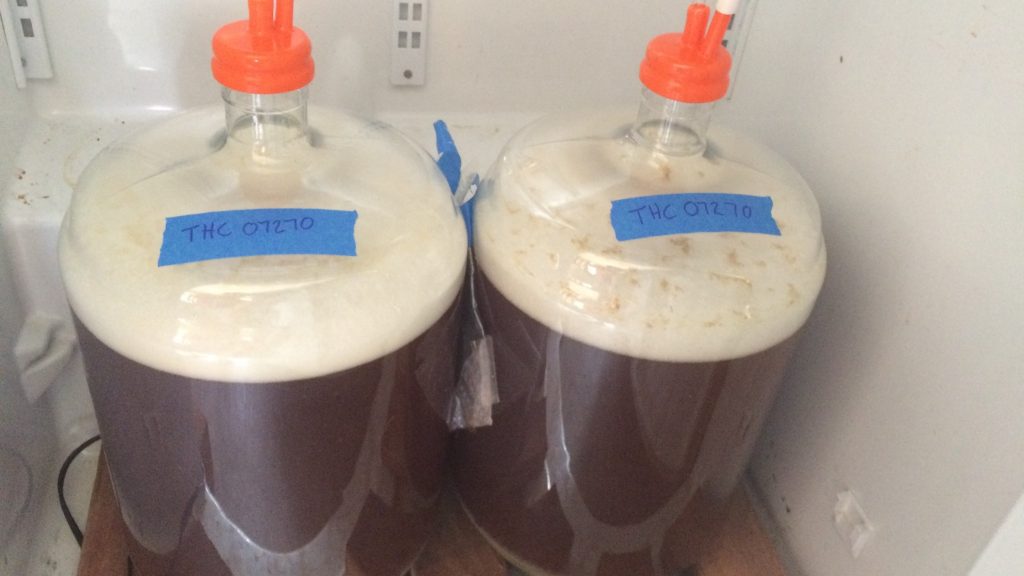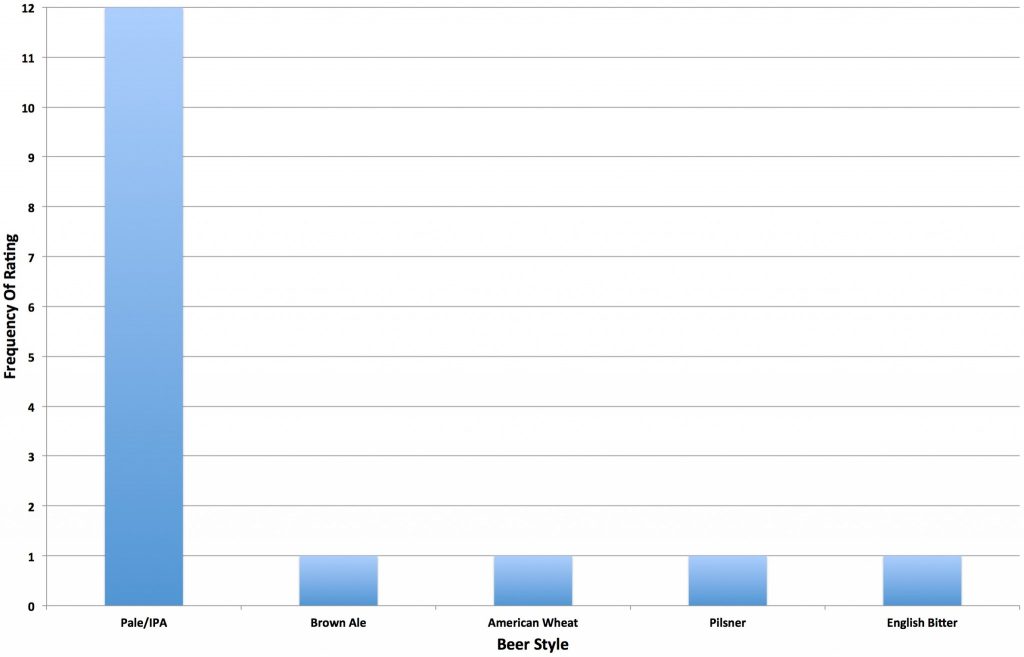Author: Jake Huolihan
Lately, it seems every great new hop variety is an attempt to capture that fruit explosion that swept palates everywhere when Citra, Mosaic, and certain New Zealand varietals descended upon us. With the movement toward fuller bodied fruit bombs, other hop flavors seem to have been left in a cloud of dust. I recently learned of a nameless hop variety that promised to deliver some of these old school, seemingly forgotten hop flavors– Experimental #07270. A cross from Apollo and Wye Target, the distributor’s description of #07270 was, to be frank, not too promising, noting the raw hop smelled of onion, garlic, black pepper, and rubber. However, information gleaned from NikoBrew, sponsor of this edition of The Hop Chronicles, gave me some hope, saying it imparts aromas of tangerine/mandarin with the flavor of ripe peach, apricot, and mango. Needless to say, I was stoked see what I would get from this hop!
Alpha: 15–18.5%
Beta: 4–5.2%
Cohumulone: 26–29% of alpha acids
Total Oil (mL/100g): 3–4.4%
Myrcene: 46.5%
Humulene: 18.10%
Caryophyllene: 9.80%
Farnesene (% of oil): 0.1-0.3%
Linalool (% of oil): 0.2 – 0.6%
Parentage: Apollo, Wye Target

In preparation for writing this article, I hit the internet to see what I could find about this variety, the results were slim. I noticed a few obscure breweries had used #07270 with mixed results. The high alpha content meant that the majority of this beer’s hops would be used for the hopstand and dry hop. Due to the high oil content, I was hopeful the resulting beer would have a noticeable impression of resin on my tongue, a characteristic I find lacking in beers made with some of the newer hop varieties.
The Hop Chronicles #07270 Pale Ale
Recipe Details
| Batch Size | Boil Time | IBU | SRM | Est. OG | Est. FG | ABV |
|---|---|---|---|---|---|---|
| 11 gal | 60 min | 89.8 IBUs | 5.0 SRM | 1.060 | 1.010 | 6.6 % |
| Actuals | 1.06 | 1.01 | 6.6 % | |||
Fermentables
| Name | Amount | % |
|---|---|---|
| Pale Malt, Golden Promise (Thomas Fawcett) | 22.625 lbs | 100 |
Hops
| Name | Amount | Time | Use | Form | Alpha % |
|---|---|---|---|---|---|
| Experimental #07270 | 30 g | 60 min | Boil | Pellet | 16.6 |
| Experimental #07270 | 30 g | 30 min | Boil | Pellet | 16.6 |
| Experimental #07270 | 60 g | 5 min | Boil | Pellet | 16.6 |
| Experimental #07270 | 120 g | 15 min | Aroma | Pellet | 16.6 |
| Experimental #07270 | 120 g | 5 days | Dry Hop | Pellet | 16.6 |
Yeast
| Name | Lab | Attenuation | Temperature |
|---|---|---|---|
| San Diego Super Yeast (WLP090) | White Labs | 80% | 65°F - 68°F |
Download
| Download this recipe's BeerXML file |
| MAKING THE BEER |
I woke up early on the morning of my brew day and turned the burner on under my strike water. Once my target temperature was reached, I transferred the water to my MLT then stirred in the milled grains, hitting my desired mash temperature.

At this time, I added the amount of brewing salts and acid suggested by Bru’n Water in order to achieve a “yellow balanced” profile then let the mash rest for an hour. I then performed a simple batch sparge, collecting the appropriate volume of sweet wort in my kettle, which I immediately began heating.

As the wort was coming to a boil, I cut open the bag of hops and was initially greeted with notes of grapefruit and pine that seemed to dissipate quickly and was followed immediately by the pungently identifiable aroma of garlic. Oddly, I experienced aspects of the aroma in my mouth, it actually lingered on my tongue and in the back of my throat for a bit. My wife, who has a much better sense of smell than me, noticed #07270 “isn’t like what you normally brew with.” I proceeded to weigh out and label each kettle addition.
I boiled the wort for 60 minutes, adding each addition at the appropriate time, then quickly chilled the wort to my target hop stand temp and tossed in the final addition of kettle hops for a 30 minute hopstand.
With the hop stand complete, I finished chilling the wort to my preferred fermentation temperature of 66°F/19°C then split it equally between two 6 gallon PET carboys, each receiving approximately 5.5 gallons.
The carboys were moved into my temperature controlled fermentation chamber before I evenly split a large vitality starter between them. Fermentation was kicking the following day.
I bumped the temperature up to 72°F/22°C after 5 days to encourage complete attenuation then came back 2 days later to add the dose of dry hops, which I let mingle with the beer for 3 more days. Fermentation activity was absent at this point, so I took a hydrometer reading that confirmed it’d reached target FG.

The beer was cold crashed and fined with gelatin before I kegged it a mere 13 days after being brewed.

Following a brief period of burst carbonating and a few days in the keezer, the beer was clear and ready to be evaluated.
| METHOD |
Participants were instructed to focus only on the aromatic qualities of the beer before moving on to evaluation of the flavor. For each aroma and flavor descriptor, tasters were first asked whether or not they perceived the characteristic with “yes” selections taking them to a page instructing them to write-in the perceived strength of that particular characteristic on a 1-9 scale (weak to strong); endorsing “no” resulted in the taster skipping over the rating of that descriptor directly to the next descriptor. Once the data was collected, the average rating of each aroma and flavor descriptor was compiled with all “no” responses being assigned a score of zero.
| RESULTS |
In total, 15 people participated in the evaluation of this beer, all blind to the hop variety used until they completed the survey. The average ratings for each descriptor were plotted on a radar graph.
Average Ratings of Aroma and Flavor Perceptions
The 3 characteristics endorsed as being most prominent by participants:
| Aroma | Flavor |
| Spicy/Herbal | Dank/Catty |
| Dank/Catty | Citrus |
| Resinous | Resinous |
The 3 characteristics endorsed as being least prominent by participants:
| Aroma | Flavor |
| Apple/Pear | Berry |
| Melon | Apple/Pear |
| Berry | Melon |
When asked to rate the pungency/strength of the hop, the majority of tasters perceived it as being quite strong.
Tasters were then instructed to identify beer styles they thought the hop would work well in.
Finally, participants were asked to rate how much they enjoyed the hop character on a 1 to 9 scale.
My Impressions: With the advantage of having read the description of this hop prior to tasting, I immediately went looking for specific traits, and I wasn’t disappointed. On the nose, I perceived a particular character more common in Colorado than most other states. From the first whiff of this beer to the final pour, dank and resinous were the descriptors I found myself most consistently settling on. Other flavors I noticed included garlic with subtle pepper and grassy notes. But it was mostly weed, really. In fact, several tasters remarked they thought this might have been brewed with it. In the end, I loved having this beer on tap and look forward to using #07270 more in the future!
| CONCLUSION |
When I think about evaluating hops, I first consider how it expresses itself when used alone. Experimental #07270 is a hop that can hold its own, in my opinion, though would likely make a great addition to hop-forward ales such as Pale Ale and IPA, perhaps of the West Coast style given its strong dank and resin character. There are other styles this hop probably wouldn’t work so well in due to how pungent it is, pretty much anything that’s not particularly hop forward. Overall, based on the results of the blind evaluation, I’m left with the impression that Experimental #07270 is like a more dank version of Simcoe, which is how I’ll think of it when designing beers featuring it in the future. The next world class IPA probably won’t be made with this hop as the feature, but I could definitely see it being used to compliment other hops in the next great beer.
If you’ve used Exp. #07270 or have thoughts on this edition of The Hop Chronicles, please say something in the comment section below!
Support Brülosophy In Style!
All designs are available in various colors and sizes on Amazon!
Follow Brülosophy on:
FACEBOOK | TWITTER | INSTAGRAM
If you enjoy this stuff and feel compelled to support Brulosophy.com, please check out the Support Us page for details on how you can very easily do so. Thanks!





















8 thoughts on “The Hop Chronicles | Experimental #07270 (2014) Pale Ale”
Is this the first one that’s had significant dank, resinous and garlic?
It’s not the first hop I’ve experienced those flavored in, but it was the most I’ve experienced it.
Sounds seriously yummy! Another relatively new hop I have used that imparts a dankness reminiscent of a certain close hop relative has been “Manderina Baveria” which has an orange & resin thing going on which is just lovely… Makes me wanna try this one too!
Both great hops!
Thanks, very informative. Good to have alternative hop choices.
Check out 077-7270 from Carton Brewing Company out of Jersey. It’s a DIPA brewed with these hops and was EXCELLENT.
For the hop additions, was it supposed to be a flame out addition or a 15 minute addition? The order they are in doesn’t make sense… (60, 30, 5, 15)
BeerXML lists “Aroma” for hopstand additions.